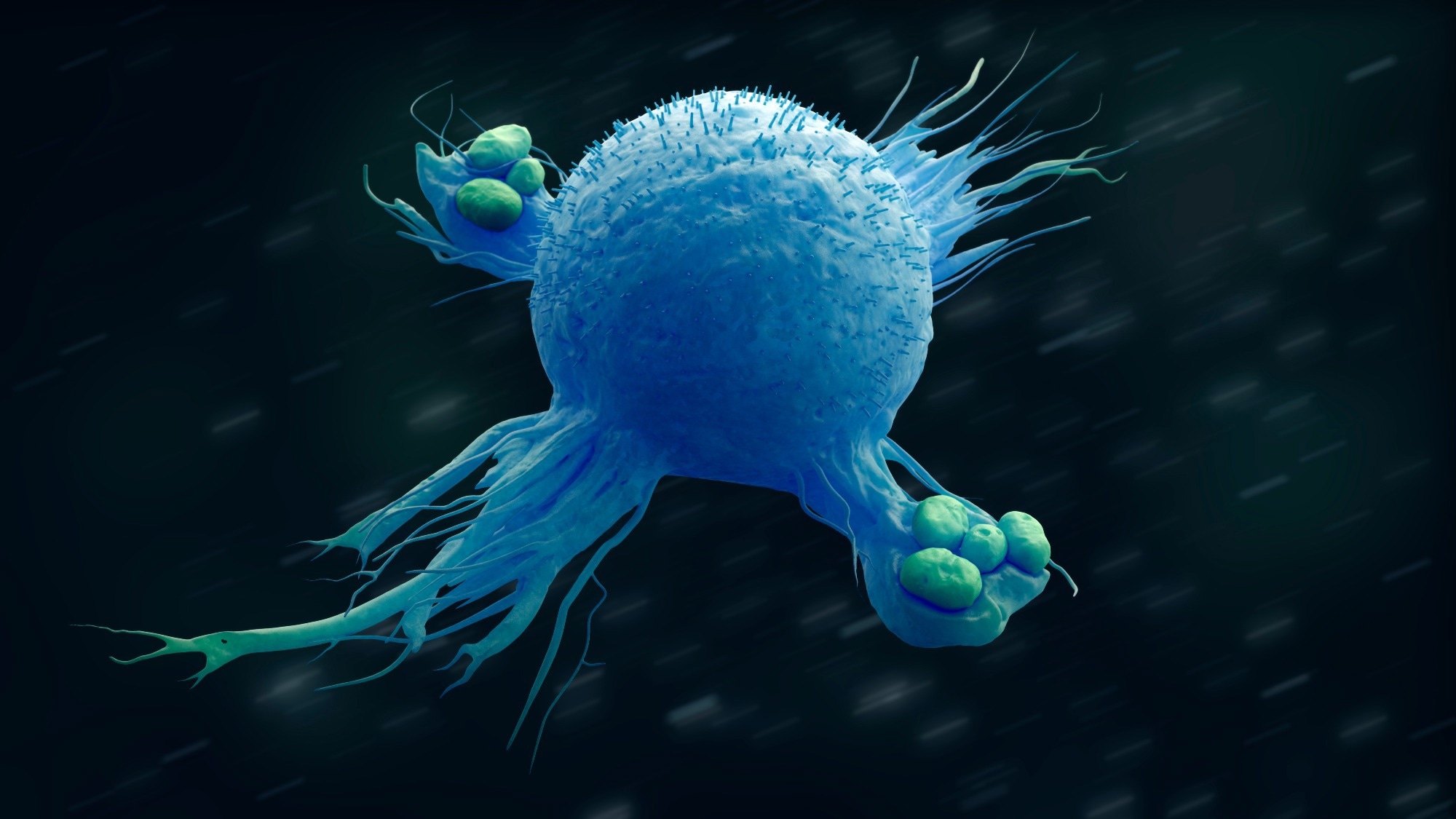Reviewed by Lauren HardakerAug 11 2025
Fighting infections requires speed and accuracy. Christoph Bock and Matthias Farlik led a team of researchers from CeMM and MedUni Vienna, which explored how macrophages, the body’s initial responders, handle this stress.
Image credit: urfin/Shutterstock.com
Their study, which appears in Cell Systems, provides a time-resolved investigation of the molecular processes that occur when these cells contact diverse pathogens. They devised a novel strategy that combines gene editing and machine learning to identify important regulators of macrophage immune responses.
Macrophages (Greek for "big eaters") live up to their name: they identify invading pathogens like bacteria or viruses, swallow them, and break them down into biochemical building pieces. Macrophages are also messengers, releasing numerous signals to attract other immune cells, causing inflammation, and presenting digested pathogen bits on their surface, leading the adaptive immune system to create long-lasting immunity.
When macrophages come into contact with a pathogen, they are put under extreme stress. An infection can be deadly if treated too late or not firmly enough. However, an overreactive immune response is also harmful.
A personalized immune response must be initiated quickly. It triggers cascades of biochemical events, activates thousands of genes, and produces an arsenal of substances, each response suited to the specific pathogen encountered.
Network of Regulators Uncovered
To better understand how macrophages coordinate these multiple tasks, a team led by Christoph Bock (CeMM Principal Investigator and Professor at MedUni Vienna) and Matthias Farlik (Principal Investigator at MedUni Vienna), with first authors Peter Traxler and Stephan Reichl (both PhD students in Christoph Bock's group), exposed mice macrophages to a variety of immune stimuli that mimic bacterial or viral infections.
They followed the changes inside the cells by measuring gene activity and DNA accessibility every few hours, resulting in a molecular timeline of how the regulatory programs progressed step by step.
The scientists then discovered regulatory proteins that coordinate these programs by creating hundreds of gene knockouts with CRISPR genome editing and characterizing the genetically disturbed cells using single-cell RNA sequencing. This novel technique revealed a network of several dozen regulators who share responsibility for initiating the correct immune response.
The discovered regulators include several "usual suspects" such as the JAK-STAT signaling pathway, splicing factors, and chromatin regulators whose involvement in immune regulation is unclear.
It is impressive how much complexity there is in this ancient part of our immune system, which we share with sponges, jellyfish and corals. Thanks to the advances in CRISPR screening technology, we can systematically study the underlying regulatory programs.
Christoph Bock, Study Senior Author and Principal Investigator, CeMM
Source:
Journal reference:
Traxler, P., et al. (2025) Integrated time-series analysis and high-content CRISPR screening delineate the dynamics of macrophage immune regulation. Cell Systems. doi.org/10.1016/j.cels.2025.101346.